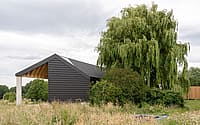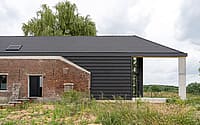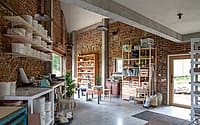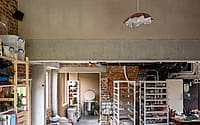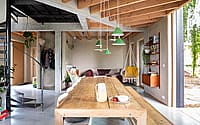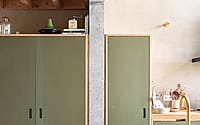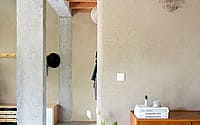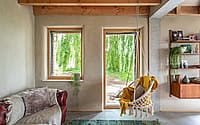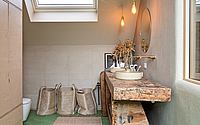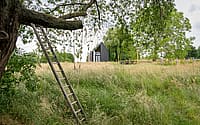Under the Willow Tree by Objekt Architecten
Under the Willow Tree is an ecological farmhouse located Ninove, Belgium, designed in 2020 by Objekt Architecten.











Description
The first idea was to renovate their previous home. But it just so happened that a week after their first meeting at our office, our customers were able to buy the home of their dreams: an old holiday home at the highest point of the village, in the midst of the countryside. Apart from the phenomenal views, the plot has an extra asset: a beautiful weeping willow.
The structure of the old house from 1904 was maintained as much as possible, in order to preserve the character of the facade. The traditional Flemish rear extension was replaced by a new structure, fitting into its casing as if it were lipstick. The new volume was clad with black tiles, both on the façade and on the roof, which blends nicely with the original brickwork. The design also took into account the client’s wishes, namely four bedrooms, a studio for the owner, who is a professional ceramist, an open-plan living kitchen, and the connection between the garden and house.
In the choice of materials, the ecological aspect was extremely important. Together with the contractor PUUR-bouwen & Giant Projects, among others, all the options were discussed and balanced. From the many bio-ecological possibilities, the choice fell on hemp lime as insulation material in the walls and on cellulose flakes as roof insulation. Inside, the walls are finished with loam plaster and, for the bathroom, a water-repellent lime plaster, tadelakt, was chosen. The load-bearing floors are made of wood that remains visible, and the kitchen is made of block boards with doors made of formwork material. These choices contribute to a warm feel and a healthy indoor climate.
The exterior joinery, installed by Mondian from Zonhove, is made in Austria. On the outside, the windows were given an aluminum finish in a deep black color to match the chosen cladding. On the inside, they were given a wooden finish, which in turn matches the clay plaster. Triple glazing, a heat pump with a borehole heat exchanger, and a type D ventilation system with heat recovery must ensure maximum climate efficiency in the house.
The 4,500 m2 plot on which the house was built was not paved over unnecessarily. The parking spaces, for example, are finished with a gravel lawn and the steps to the front door and the studio appear to be floating over the bee-friendly front garden. The rest of the garden has been kept natural and will evolve together with the family. In the meantime, the client has already installed an outdoor bath and the garden has been given a fruit-picking maze.
The result is an ecological house in which the residents can live and work in a beautiful, green setting, thanks to the large windows, and in which, when the weather is good, you can imagine yourself in Provence.
Photography by Bert Vereecke
Visit Objekt Architecten
- by Matt Watts